As promised, I’ve been working my way through Tracy DiSabato-Aust’s book, “The Well-Tended Perennial Garden,” as well as internet sources of information, researching my plants to see what kind of fall maintenance is required before I declare victory and retreat from gardening this year. And, as I thought, there isn’t much to be done in the fall. Typically, they (various websites) say you have a choice of cutting back plants in the fall or in the spring, but it seems that leaving plants alone for the winter adds visual interest to the garden, provides food for birds and other critters, and helps shelter the plants for the colder temperatures ahead. The bad news is that if you conclude it’s best to wait for spring, you create an enormous amount of work for next year. A frightening, scary, ludicrous amount of work. I don’t think I’ll be complaining that I don’t have a lot to do come next March/April.
I’ve been taking some notes and photos of what will need to get done next spring. (I know, how did it come to this? Me taking notes?) I thought I would share some items on the list, focusing on bushes and flowering shrubs. I was in Florida during the month of March last year, so the early spring cleanup had to wait until April. I hope to be cutting back certain bushes and shrubs in March this time around, before the bushes begin to flower. I’ll be planting, dividing, and moving perennial plants in April (he says with a vacant look in his eyes and a bemused smile on his face). Of course, it’s never that easy. Some of the shrubs need to flower first and then be pruned, a confusing state of affairs that I’ve written about ad nauseam when it comes to hydrangea and rhododendron.

My neighbor, Sam, has a cool reciprocating saw that is perfect for cutting back trees and branches, and he has generously offered me this invaluable tool on loan next year. His son, Ben, was on the team at Black and Decker that designed this awesome cutting machine, so this particular tool has more meaning than any other saw I might buy at Home Depot. I have several nandina domestica (better known as heavenly bamboo) and aucuba japonica (gold dust plant or Japanese laurel) bushes that need to be cut back. (Yes, I still have to look up the names of my bushes on my PictureThis app every time I refer to them. A good goal for next year, I think ... learn the names of the bushes and flowering shrubs in the garden.) Same goes for the cherry laurel in and around my waterfall bed, sun bed, and back bed. As I recall, to my shock and horror, my garden crew accidentally trimmed the fluffy white flowers off of these bushes last spring. Next year I plan on doing the trimming all by myself. Just like a big boy gardener.
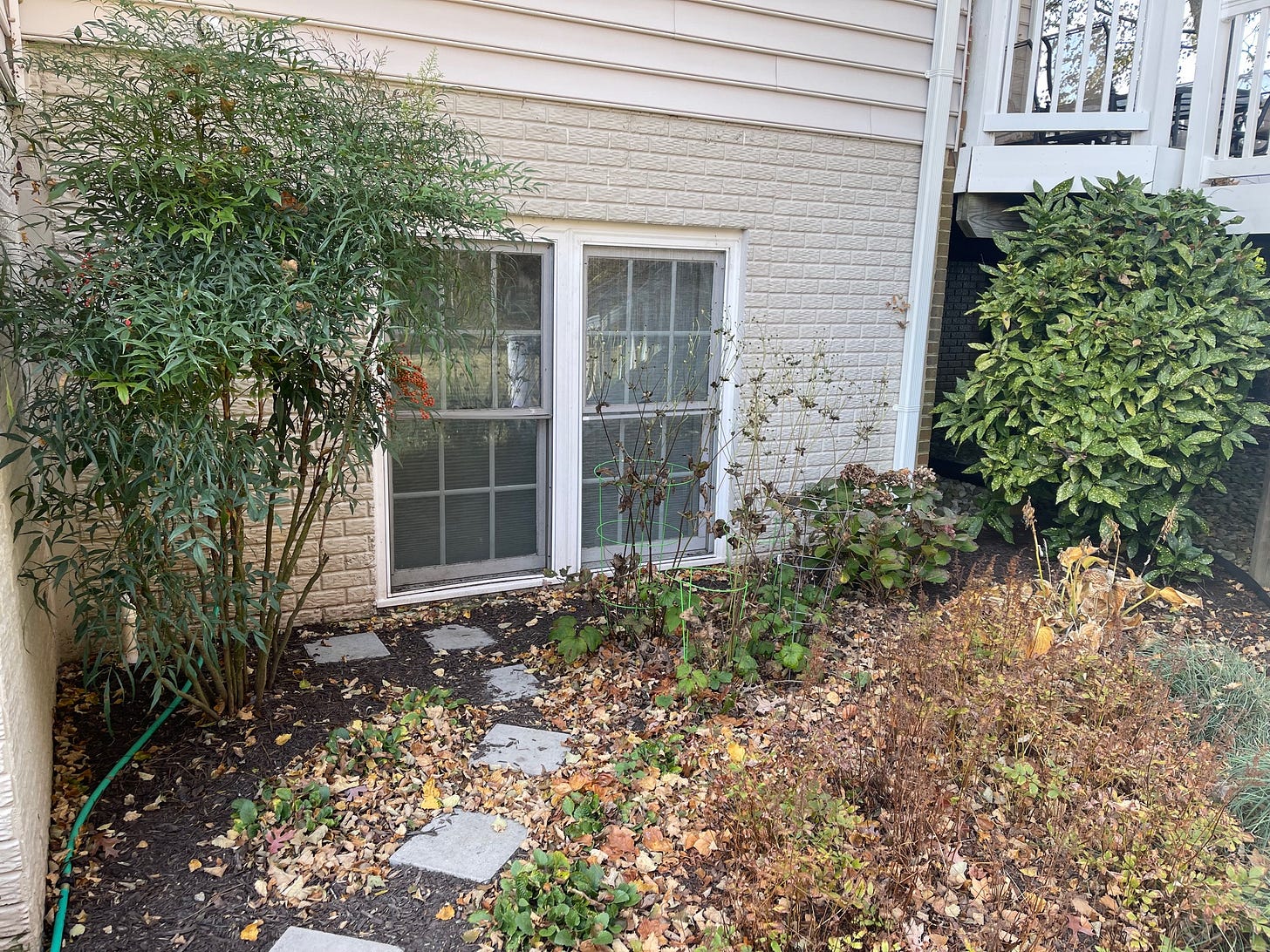
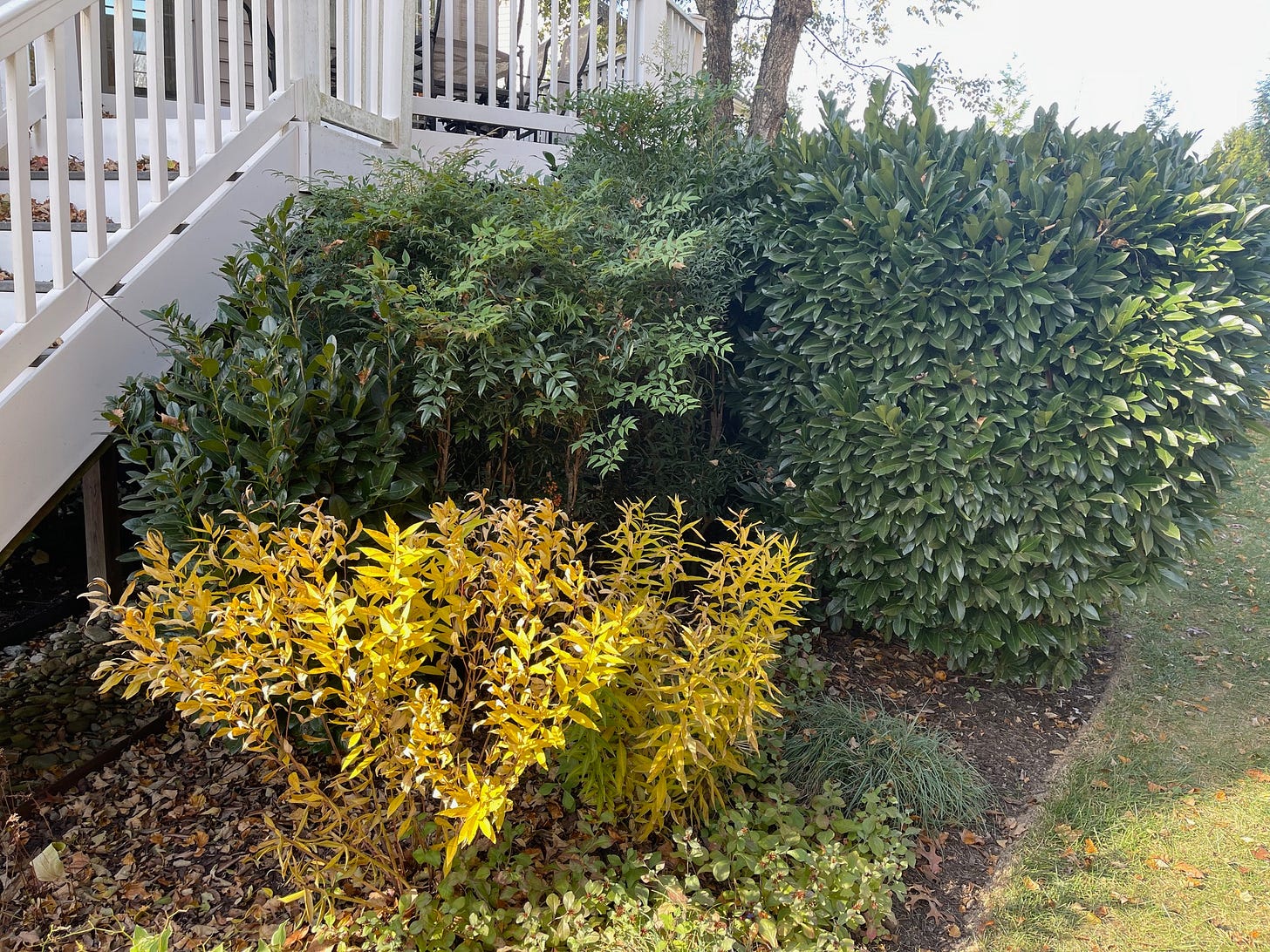
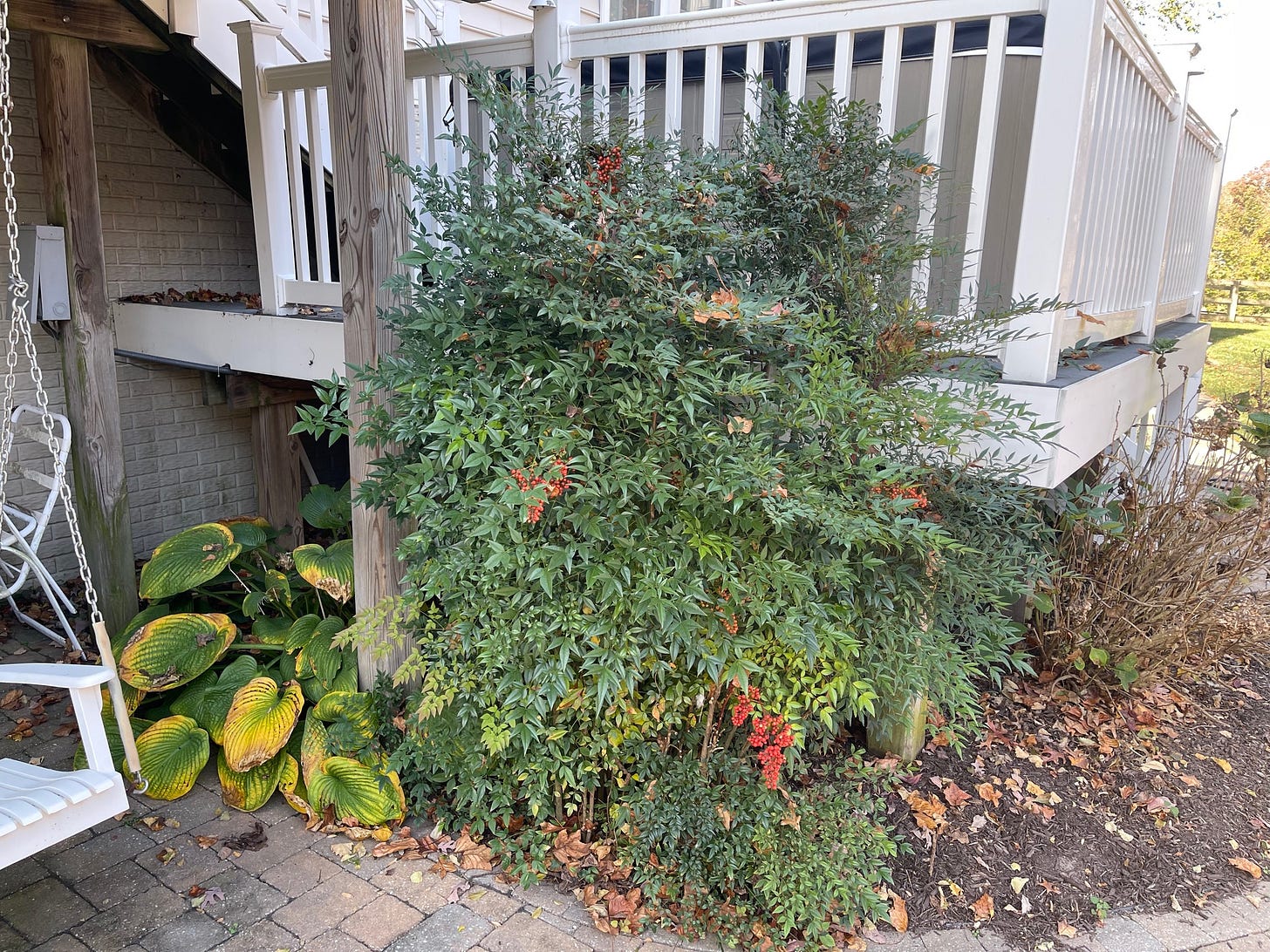
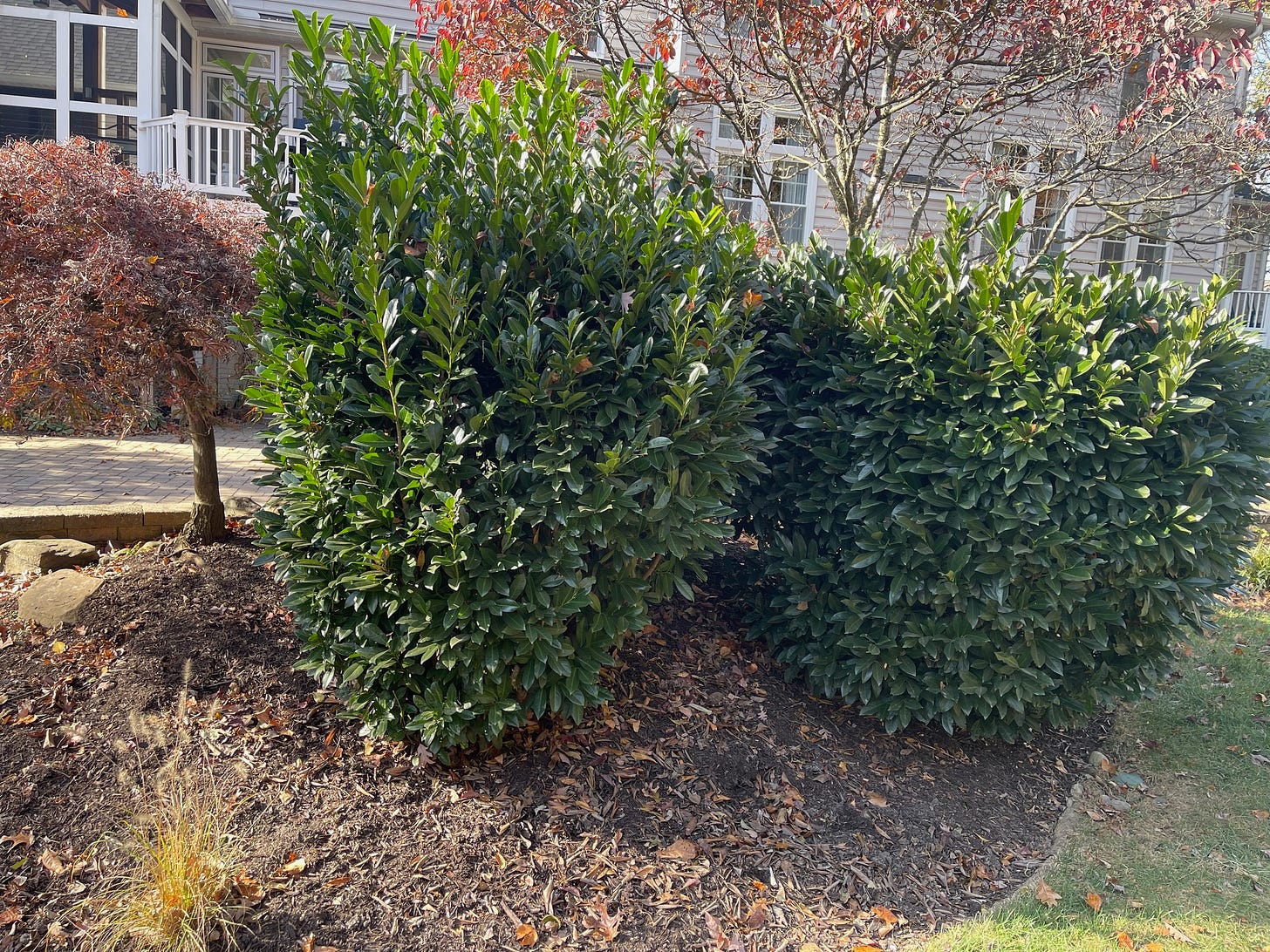
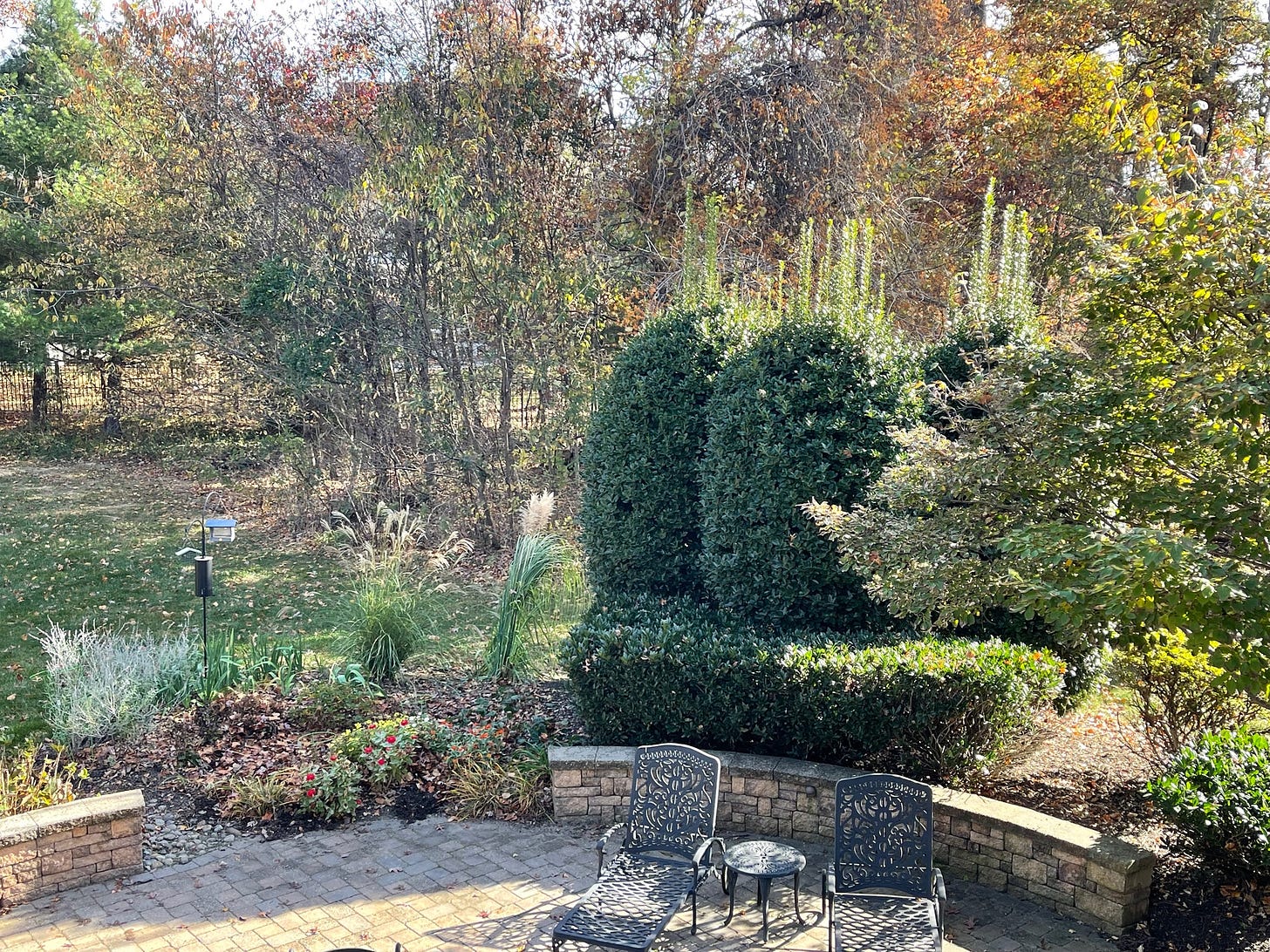
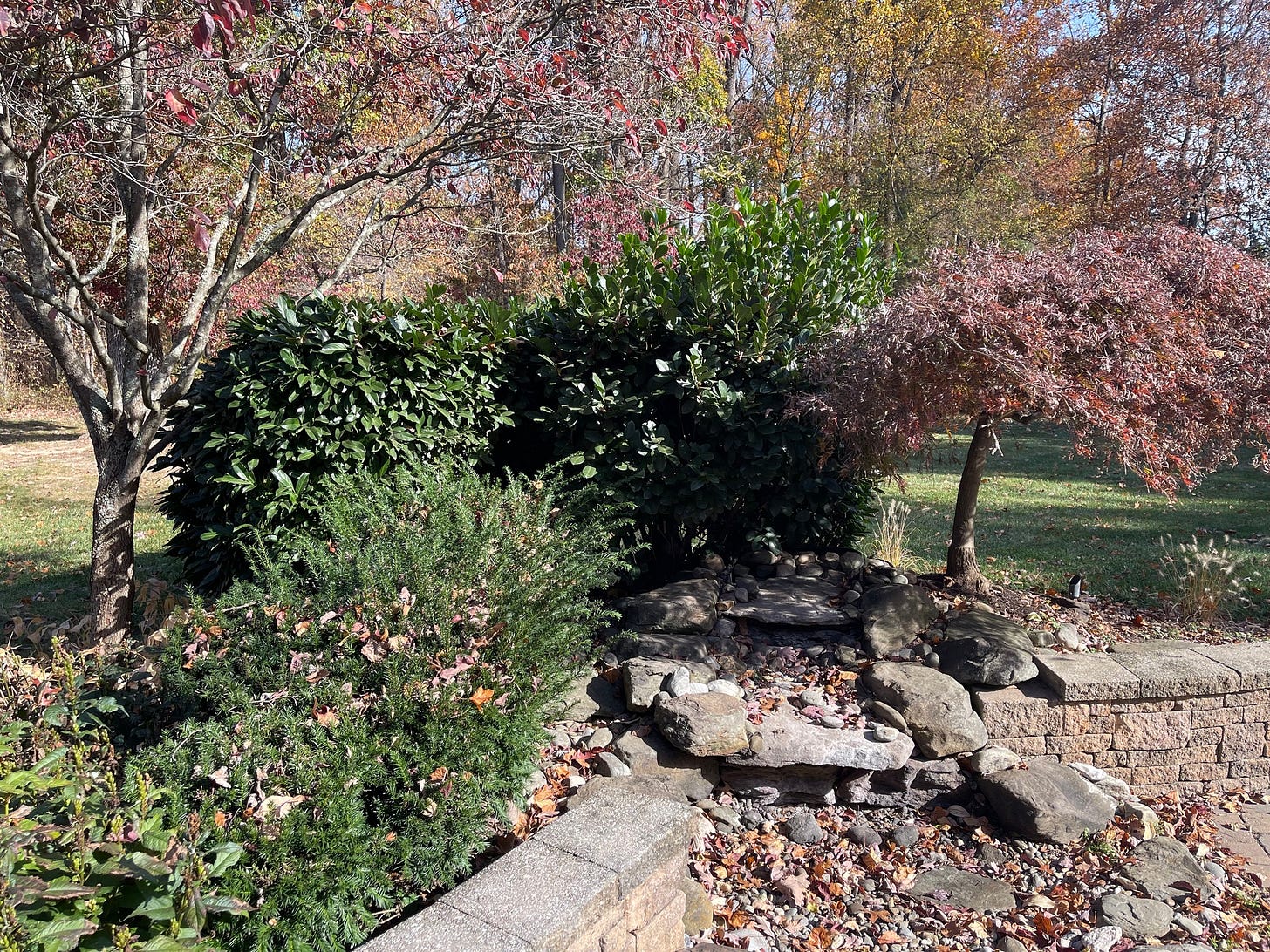
Along both sides of the steps bed there are more flowering shrubs to be pruned in early spring. To the left of the steps at the base of the poplar tree are Japanese pieris and Japanese spiraea. Both plants look beautiful in the spring, but from what I’m reading, you have to wait for them to finish blooming before you prune them. Maybe late May or June sounds about right. On the side of the steps near the house I have more pieris, as well as two rhododendron plants that also need to be pruned after they flower. If they do give me some blooms, I will be a very happy gardener since they haven’t bothered to flower since I moved them to this side of the house.
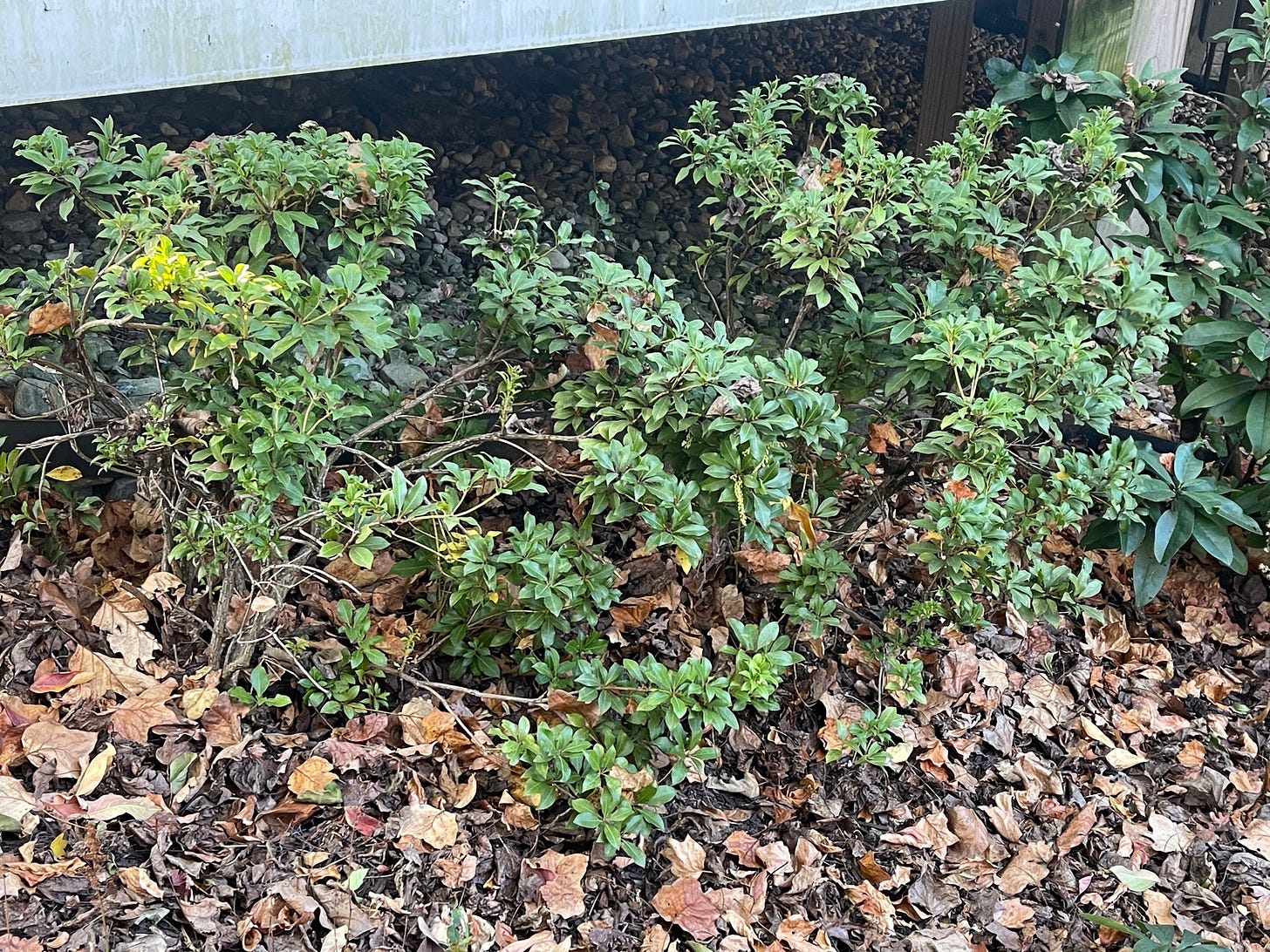
It is, I think, unfortunate that I will forget the names of all of these flowering shrubs and bushes by the time this post hits the press. Of course, this is just the tip of the iceberg. I didn’t delve into the maintenance I have lined up for my perennial plants in the spring. I have perennials to divide, beds to plant, and nurseries to haunt in search of the perfect plant. However, that story deserves its own post, and I will tell it shortly.
I hope this look at flowering bushes and shrubs was interesting. If you care to share it with others, just click on the SHARE button in the text, or send them a link to kensolow.substack.com. To see other terrific gardening content, visit the archives for The Painful Education of a Type A Gardener by clicking on the small image of me at the top of the page.
As always, I very much appreciate your likes and comments. Thanks for taking your time to read a newsletter that was originally just supposed to entertain its author. Tune in next week for the most anticipated post of the year. That’s right. The Plant of the Year Awards show is next week and the winners will be announced right here at The Painful Education of a Type A Gardener.




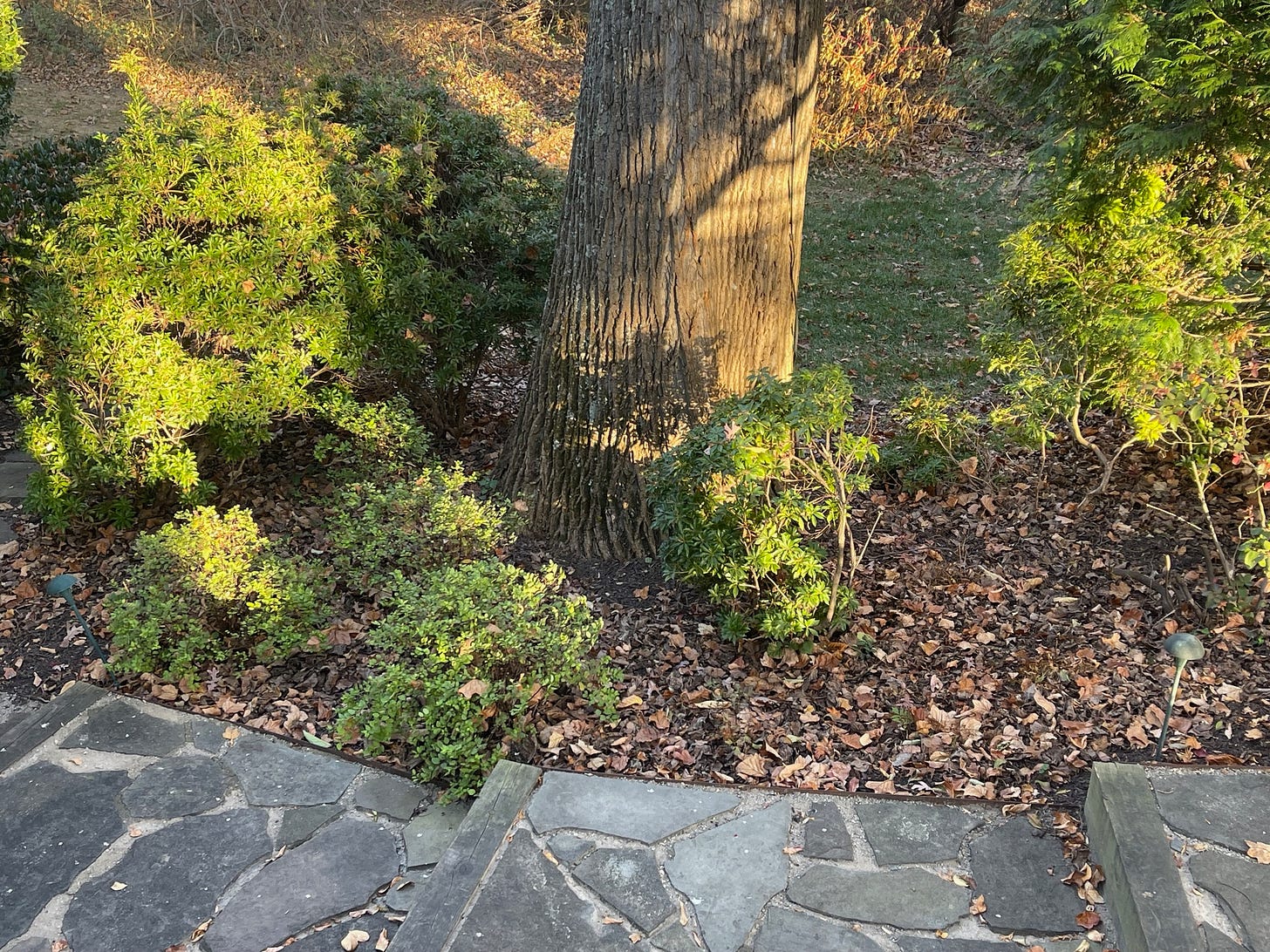
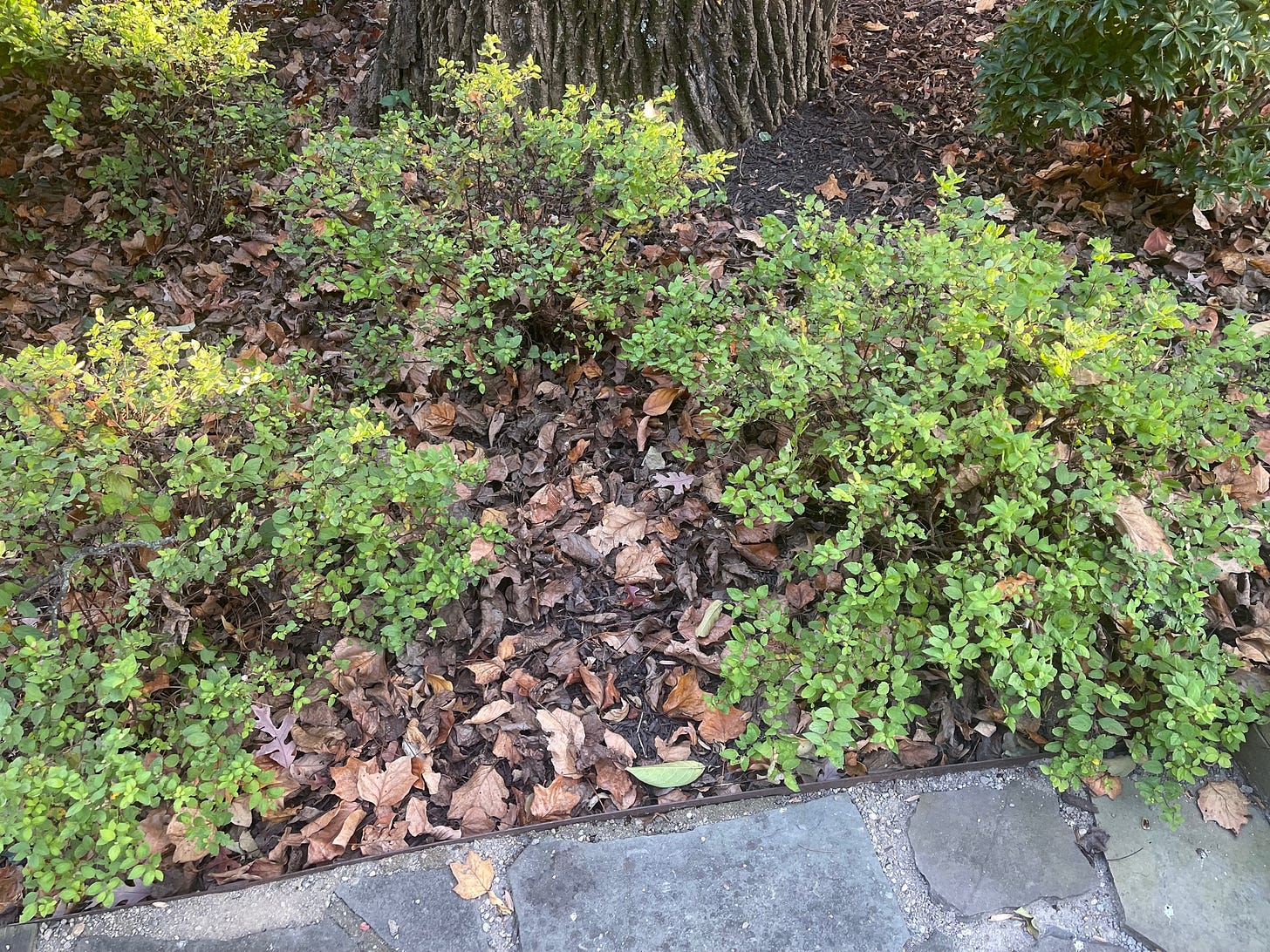
Early spring pruning is on our to-do list as well.